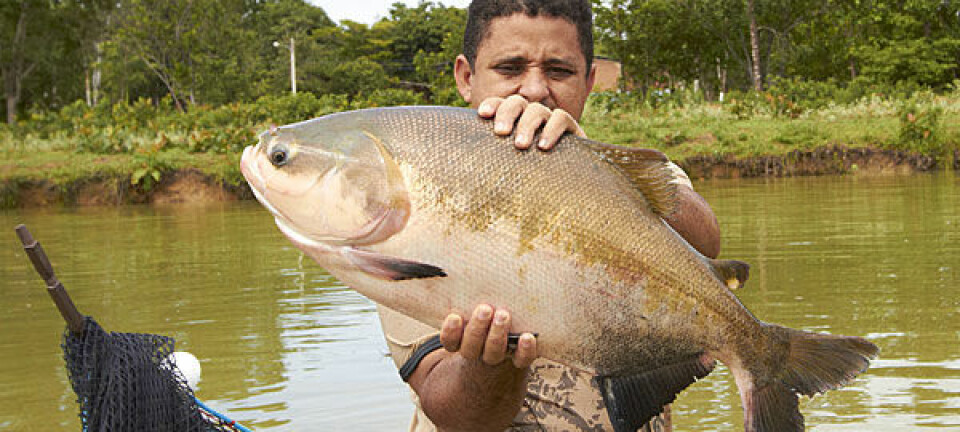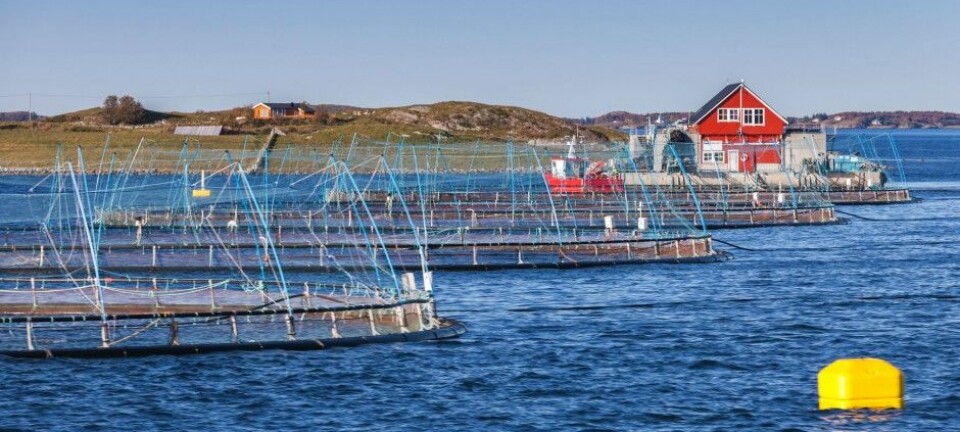
How healthy is farmed salmon?
Is farmed salmon as healthy to eat as wild salmon? And what about the health of the fish themselves?
Health authorities in many parts of the world are urging people to eat more fish for dinner, preferably two to three times a week. About half of those meals should be fatty fish like trout, salmon, mackerel or herring. According to dietary advice, consuming farmed fish is fine.
But is farmed salmon as good for you as other fish? Or does it contain more contaminants and antibiotics?
Janneche Utne Skåre is a toxicologist and led the work of the Norwegian Scientific Committee for Food and Environment’s benefit and risk assessment of fish in the Norwegian diet, which was published in 2006 and updated in 2014. Fish consumption recommendations are based on this work.
“When we carry out this kind of assessment, we do a thorough literature search and look at the available research. We base the assessments on several studies that point in the same direction, says Skåre.
The research group considered different types of fish in their study, including farmed salmon.
Fewer contaminants in farmed salmon
Environmental toxins are substances that don’t break down in the body and thus they accumulate there. Many of them are fat soluble, and so you find more of them in fatty fish.
In the past, more contaminants were found in farmed salmon than in wild fish, because the salmon feed was based on fish protein and fish oil, which added contaminants to the farmed fish diet. Today, salmon receive feed that is about 70% plant based, which has resulted in farmed salmon having a lower contaminant level than wild salmon.
According to Skåre, farmed fish are as beneficial as wild fish today with regard to environmental toxins. Many people have wondered whether other substances in the feed, like pesticides, are dangerous. The 2014 data indicated that residues from these substances are very low and do not pose any danger, Skåre says.
Lower omega-3 levels
Since the salmon feed now contains less fish oil, there is less omega-3 in farmed fish than in wild fish.
Farmed salmon have a less favourable omega-6 and omega-3 fatty acid ratio than is found in wild salmon. But they still have some ability, especially early in life, to convert omega-3 from plants to the long-chain fatty acids EPA and DHA.
Skåre says that there is no nutritional difference between farmed salmon and wild salmon in terms of proteins, vitamin B12 and iodine.
However, farmed salmon contains a little less selenium, copper, zinc and iron.
One question is whether ingesting faeces and waste substances in the limited space of farmed salmon enclosures is a concern.
"This isn’t a problem of any significance, no residues of this end up in the salmon," says Skåre.
Breeders ensure that there is a steady flow of water through the cages.
Minimal antibiotic use
The aquaculture industry used 212 kg of antibiotics in 2016, the lowest figure since the 1970s. Most of the antibiotics targeted cleaner fish, since salmon are vaccinated against bacterial diseases. Thus, no traces of antibiotics are present in the salmon.
Skåre says some medical treatments are used, including for salmon lice. “However,” she says, “we found that the amount of such substances were within safe levels.” These levels are based on experimental studies that calculate weekly amounts of a particular substance that can be ingested throughout a lifespan without compromising it.
Farmed salmon meat is naturally gray-white in colour, and so to achieve the desired red salmon colour, astaxanthin is added as a feed ingredient. In addition to being a vibrant pigment, astaxanthin is a powerful antioxidant found in algae and marine animals, and is also essential for the health of farmed aquatic animals.
Skåre says that the bottom line is that farmed salmon is a healthy and safe food.
How about the salmon's health?
Farmed salmon may be healthy for humans, but unfortunately the fish are struggling with their own health. Parasitic sea lice attach to the salmon, and so far researchers have found no good solution to remedy the problem. Several other diseases also affect Norwegian salmon.
Norway puts 300 million smolt into net pens annually. In 2016, one in five of these fish died of health problems – and this number doesn’t take into account the fish that die during their freshwater phase or during shipment.
Aud Skrudland is a veterinarian and special inspector at the Norwegian Food Safety Authority in the field of fish health and welfare.
She points to the main conclusion regarding fish health in the Food Safety Authority's annual report, which states that "[t]he fish health situation is worrying. The aquaculture industry is still struggling with salmon lice problems, diseases, high mortality and inadequate emergency preparedness. The problems are hindering growth targets.”
New lice-fighting methods bring new problems
Salmon lice continue to plague the fish and are found on virtually all salmon.
"They’re a natural parasite, but they increase in number according to the salmon density within a geographical area," says Skrudland.
Researchers hoped that cleaner fish could solve the lice problem. But unfortunately lice are also bothering these fish and many of them die of disease.
Since salmon lice have developed resistance to most drugs, breeders have adopted a new mechanical delousing system.
Mechanical delousing involves more handling and rinsing of the fish. The Norwegian Veterinary Institute’s 2016 Fish Health Report notes the stress on the fish and the risk of mechanical injuries to gills, fins, eyes and skin with this method. In a survey connected with this report, 93 per cent of breeders report that they have recorded "significant mortality" due to mechanical delousing.
Skrudland says the extensive handling of the fish with this method appears to reduce their resistance and leads to more outbreaks of other types of diseases.
Norway’s extensive fish vaccination programme provides protection against six diseases. Viral diseases – such as pancreas disease and heart and skeletal muscle inflammation – pose the greatest threat to the fish.
Some bacterial diseases have been hard to eradicate. "We’ve seen a steady increase in yersiniosis outbreaks in recent years,” says Skrudland. “Gill problems among the salmon are also a growing problem in Norway.”
Amoebic gill disease affects both salmon and cleaner fish, and has been spreading since 2006. In 2016, the amoeba causing the disease was found along the entire Norwegian coast. The disease causes severe inflammation and leads to mucus build-up and lesions in the gills.
Winter ulcer disease is another bacterial infection that can cause skin sores that expose the flesh of the fish and gradually increase in size and depth.
Handling of the fish and low water temperatures seem to trigger winter ulcer. The disease still occurs despite a vaccine against winter ulcer being part of the standard package that all salmon receive, so clearly the vaccination isn’t effective for all fish.
Healthy food, with some problems
Fish farming, as opposed to other types of farming, requires a veterinarian or fish biologist to inspect aquaculture facilities 6-12 times a year. Breeders must also contact their fish health professional as soon as increased mortality or abnormalities are detected. So there’s a good first line of defence against diseases, Skrudland says.
“Sick fish swim at the surface, so to some extent, it’s possible to remove fish that exhibit different behaviour. Unfortunately, it’s impossible to remove all the injured fish,” says Skrudland.
"A lot of positive things are going on in the salmon farming industry. It provides healthy and safe food and good jobs. At the same time, some things aren’t good and we also have to be aware of them.”
——————————————————-
Read the Norwegian version of this article at forskning.no

































